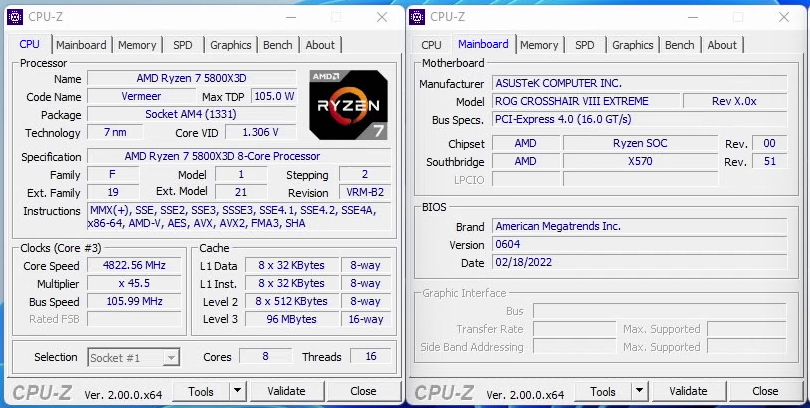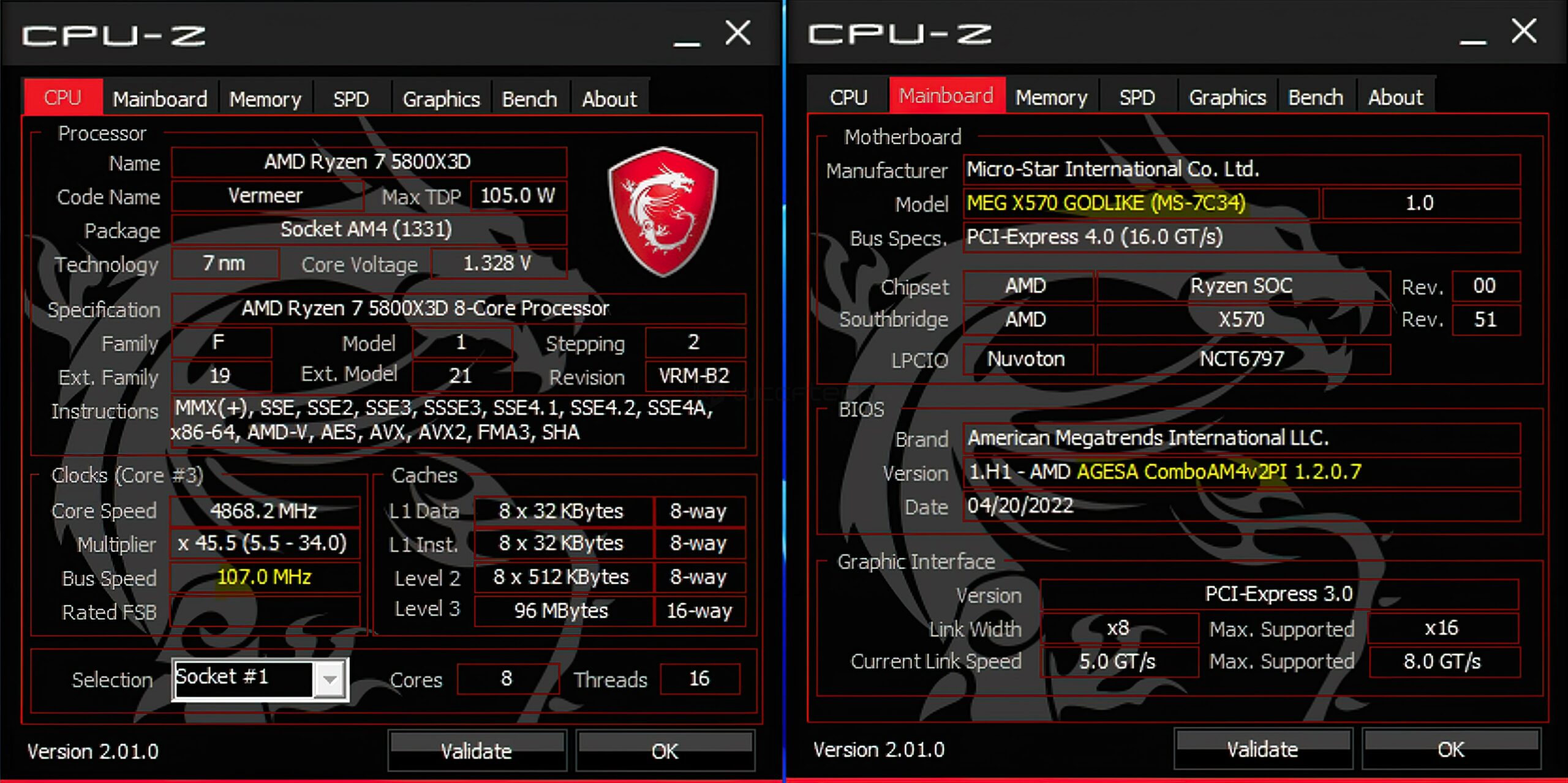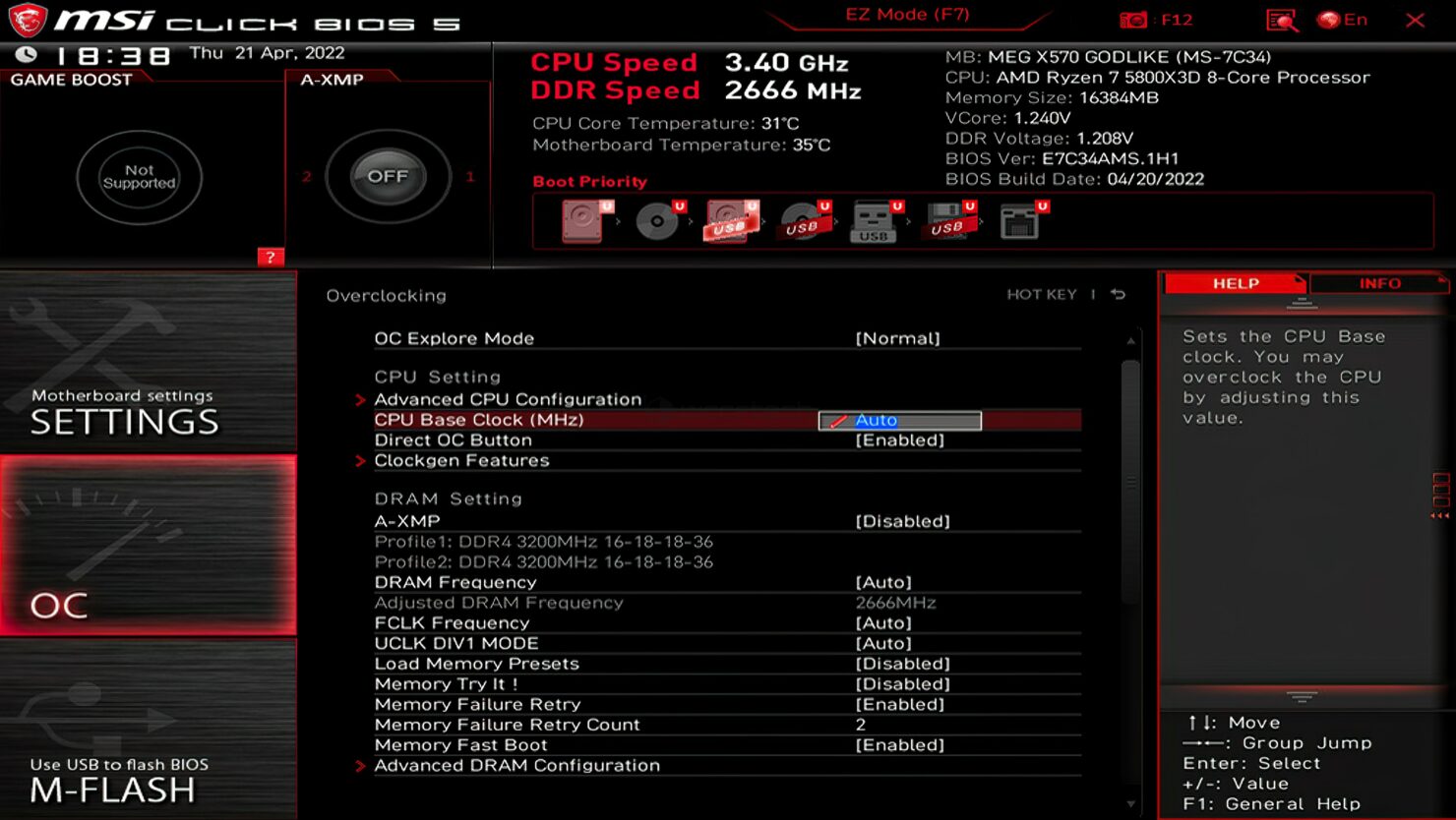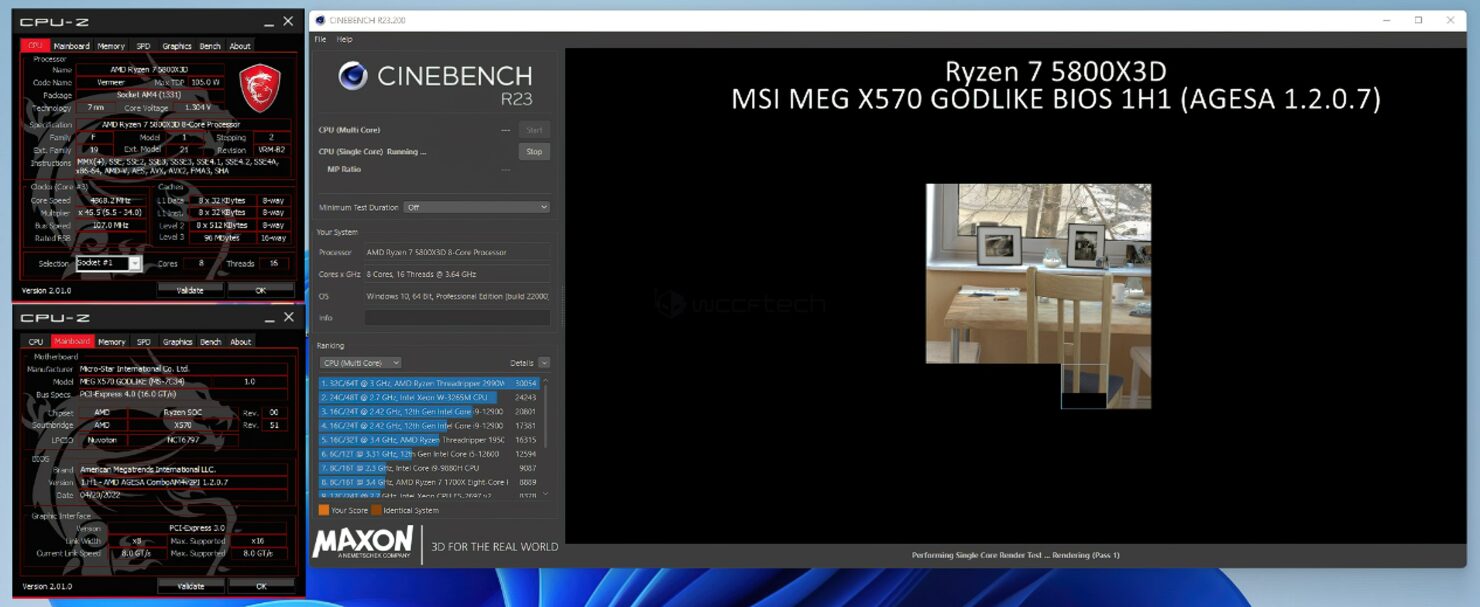D
Deleted member 2731765
Guest
Hi guys,
As you may already know by now, that AMD's Ryzen 7 5800X3D, the world's first 3D V-Cache chip hits retail next week and it looks like overclockers have already bypassed its OC-Lock.
The AMD Ryzen 7 5800X3D is going to be the first and only chip with 3D V-Cache based on the 7nm Zen 3 core architecture. The CPU is going to offer 8 cores, 16 threads, and 100 MB of combined cache thanks to its additional 64 MB 3D Stacked SRAM design. Clock speeds will be maintained at 3.4 GHz base and 4.5 GHz boost with a TDP of 105W.
But before continuing further, it is also worth mentioning that according to AMD's Robert Hallock, the Ryzen 7 5800X3D CPU has overclocking hard locked to avoid physical damage to the 3D V-Cache.
The reason for this lock in the first place is due to the voltage curve. While AMD's Zen 3 chips can reach up to 1.5-1.6V with overclock, the 3D V-Cache stack that sits on top of the Zen 3 cores can only do 1.35V and it is already running at its limit out of the box. If users try to overvolt the chip beyond that voltage curve, they can break the chip and hence why overclocking is not supported for the CPU.
AMD only said that it will enable memory & FLCK overclocking for the said chip.
However, Pieter of SKATTERBENCHER seems to have proven AMD wrong and bypassed this overclock lock. The overclocker shared a pictured of CPU-z in which the Ryzen 7 5800X3D can be seen with an operating frequency of 4.82 GHz, far above its 4.5 GHz max boost clock. Though please sprinkle some salt on this discovery/feat for the time being.

Anyway, the chip was running on the ASUS ROG Crosshair VIII Extreme motherboard with a 1.306V voltage and a 45.5 multiplier and a BCLK of 105.99 MHz. The overclocker did use ASUS's Voltage Suspension technology to make it work & will have a video out explaining the whole process soon.
This proves that the 3D V-Cache chip can indeed be overclocked and users can get additional performance though we don't know what impact the overclock has on the cache itself and what kind of temperatures/power it produces with such overclocks. Hopefully, we will be getting more details on overclocking once the first reviews hit the web tomorrow.
The Ryzen 7 5800X3D is turning out to be a great gaming CPU as far as its price is compared to the Intel flagship, the Core i9-12900K. AMD can have a very disruptive offering as it says its last hurrah to the AM4 platform. For good or bad only time can tell ?
View: https://twitter.com/skatterbencher/status/1514063342440116229
View: https://twitter.com/Buildzoid1/status/1514071272979931138
As you may already know by now, that AMD's Ryzen 7 5800X3D, the world's first 3D V-Cache chip hits retail next week and it looks like overclockers have already bypassed its OC-Lock.
The AMD Ryzen 7 5800X3D is going to be the first and only chip with 3D V-Cache based on the 7nm Zen 3 core architecture. The CPU is going to offer 8 cores, 16 threads, and 100 MB of combined cache thanks to its additional 64 MB 3D Stacked SRAM design. Clock speeds will be maintained at 3.4 GHz base and 4.5 GHz boost with a TDP of 105W.
But before continuing further, it is also worth mentioning that according to AMD's Robert Hallock, the Ryzen 7 5800X3D CPU has overclocking hard locked to avoid physical damage to the 3D V-Cache.
The reason for this lock in the first place is due to the voltage curve. While AMD's Zen 3 chips can reach up to 1.5-1.6V with overclock, the 3D V-Cache stack that sits on top of the Zen 3 cores can only do 1.35V and it is already running at its limit out of the box. If users try to overvolt the chip beyond that voltage curve, they can break the chip and hence why overclocking is not supported for the CPU.
AMD only said that it will enable memory & FLCK overclocking for the said chip.
However, Pieter of SKATTERBENCHER seems to have proven AMD wrong and bypassed this overclock lock. The overclocker shared a pictured of CPU-z in which the Ryzen 7 5800X3D can be seen with an operating frequency of 4.82 GHz, far above its 4.5 GHz max boost clock. Though please sprinkle some salt on this discovery/feat for the time being.

Anyway, the chip was running on the ASUS ROG Crosshair VIII Extreme motherboard with a 1.306V voltage and a 45.5 multiplier and a BCLK of 105.99 MHz. The overclocker did use ASUS's Voltage Suspension technology to make it work & will have a video out explaining the whole process soon.
This proves that the 3D V-Cache chip can indeed be overclocked and users can get additional performance though we don't know what impact the overclock has on the cache itself and what kind of temperatures/power it produces with such overclocks. Hopefully, we will be getting more details on overclocking once the first reviews hit the web tomorrow.
The Ryzen 7 5800X3D is turning out to be a great gaming CPU as far as its price is compared to the Intel flagship, the Core i9-12900K. AMD can have a very disruptive offering as it says its last hurrah to the AM4 platform. For good or bad only time can tell ?
View: https://twitter.com/skatterbencher/status/1514063342440116229
View: https://twitter.com/Buildzoid1/status/1514071272979931138




